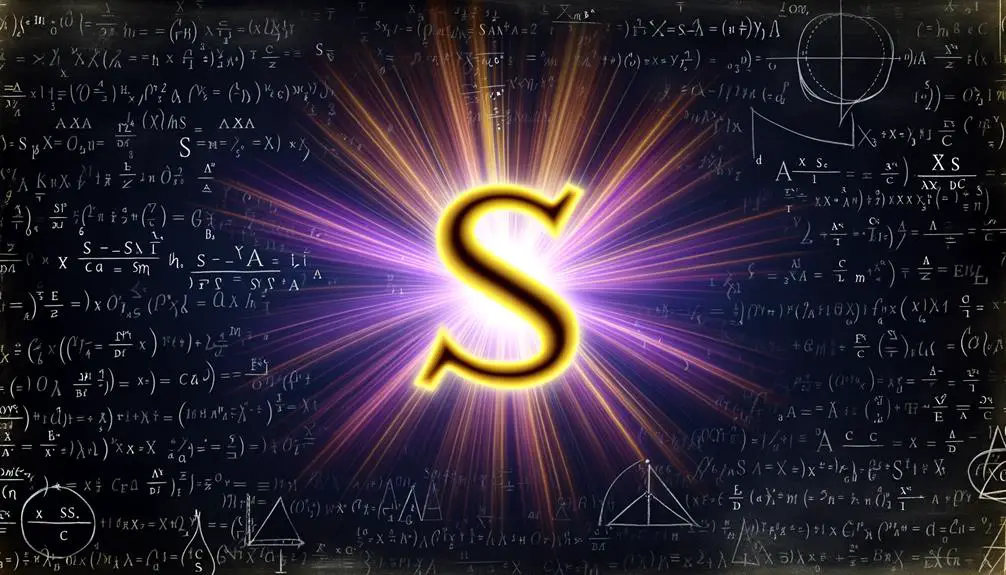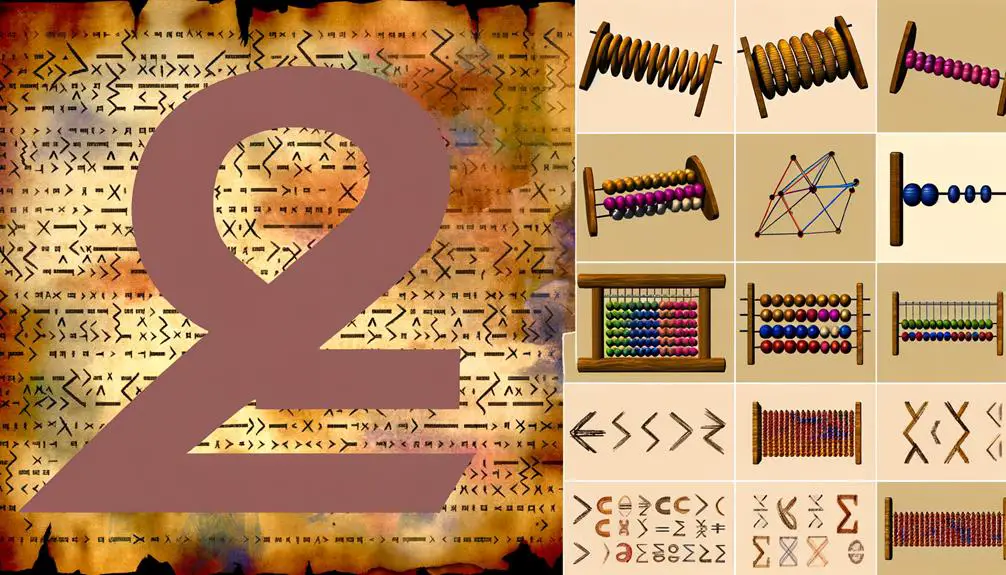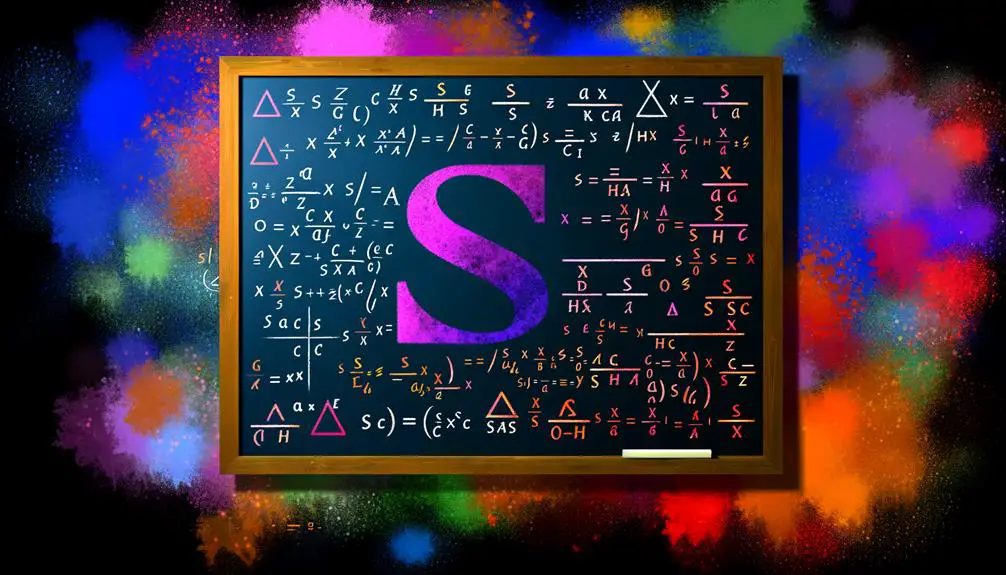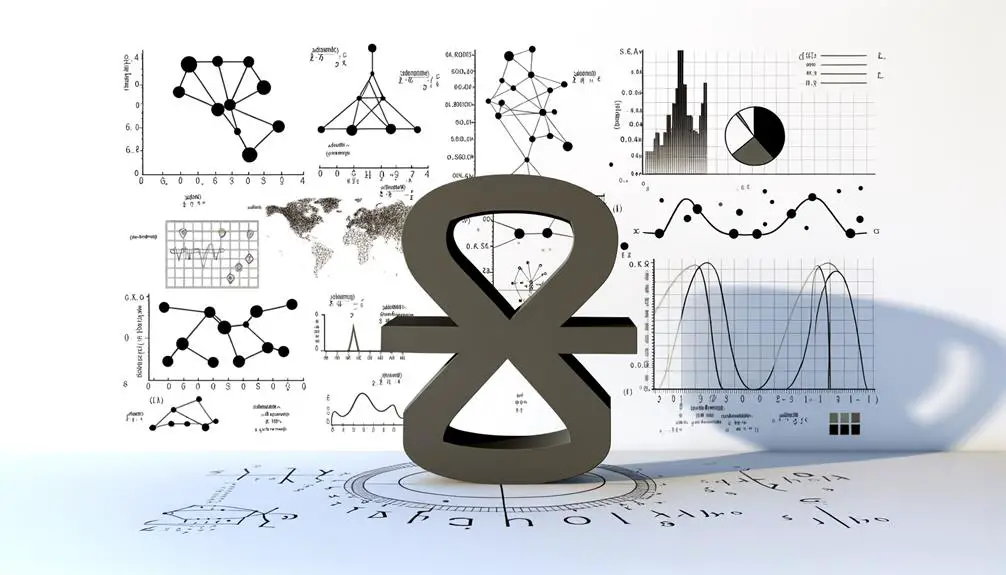What Is the Meaning of the Sigma Symbol in Math?
The sigma symbol (Σ) in mathematics represents summation, a process of adding a sequence of numbers or expressions. It has roots in ancient Greek civilization, originating from the Greek letter 'sigma.' In summation notation, Σ_{i=a}^{b} f(i), 'i' is the index of summation, 'a' and 'b' are the bounds, and 'f(i)' is the function.
Sigma notation is integral in algebra for simplifying polynomial expressions, in calculus for expressing series and integrals, and in statistics for computing mean and variance. By mastering sigma notation, one can reveal deeper insights into mathematical analysis and applications.

Key Takeaways
- Sigma (Σ) represents the summation of a sequence of terms in mathematics.
- It is formally defined as Σ_{i=a}^{b} f(i), where 'i' ranges from 'a' to 'b.'
- Sigma notation succinctly expresses long sums and sequences in mathematical formulas.
- It is essential in calculus for evaluating series, integrals, and approximating areas under curves.
- In statistics, sigma notation simplifies calculations for mean, variance, and other data analyses.
Origin and History of Sigma

The sigma symbol (Σ) has its origins in ancient Greek civilization, where it was used as a letter in the Greek alphabet. The term 'sigma' is derived from the Greek word 'σίγμα,' signifying the sound 's.'
Over time, this symbol transcended its linguistic roots to find applications in various fields, especially mathematics. In the mathematical context, sigma has been appropriated to signify summation, embodying the concept of adding a sequence of numbers or expressions.
This evolution from a mere alphabetic character to a mathematical notation underscores the development of symbols in aligning with human intellectual progress. Understanding the historical context of sigma enriches its interpretation in contemporary mathematical practices, revealing a profound connection between ancient language and modern analytical thought.
Basic Summation Notation
In the domain of mathematics, basic summation notation is represented by the sigma symbol (Σ) and is used to denote the sum of a sequence of terms.
This notation is formally defined as Σ_{i=a}^{b} f(i), where 'i' is the index of summation, 'a' and 'b' are the lower and upper bounds respectively, and 'f(i)' is the function of 'i' to be summed.
The process involves evaluating 'f(i)' for each integer value of 'i' from 'a' to 'b' and summing the resulting values.
Summation notation is a powerful tool for expressing long sums succinctly and is foundational in various mathematical disciplines, including calculus, statistics, and discrete mathematics.
Its precision facilitates complex mathematical analysis and concise expression.
Sigma in Algebra

Building on the foundational understanding of basic summation notation, sigma notation in algebra plays a critical role in simplifying and solving polynomial expressions and equations. This notation aids in the compact representation of polynomial terms and facilitates more efficient algebraic manipulations.
Key applications include:
- Polynomial Expansion: Sigma notation can represent the sum of terms in a polynomial, simplifying expressions.
- Series Solutions: Algebraic equations involving series can be more easily solved using sigma notation.
- Factorization: Sigma notation assists in expressing and factoring polynomial equations.
- Recursive Formulas: It enables the concise representation of recursive relationships in algebraic contexts.
Applications in Calculus
Sigma notation's utility extends greatly into calculus, where it serves as a fundamental tool for expressing and evaluating infinite series and integrals. In calculus, sigma notation simplifies the representation of long sums, making it indispensable when dealing with sequences and series. For instance, the summation of a geometric series can be compactly expressed using sigma notation, facilitating both theoretical analysis and practical computation. Additionally, sigma notation underpins the Riemann sum, an essential concept for approximating the area under a curve, which ultimately leads to the definition of definite integrals.
| Application | Description |
|---|---|
| Geometric Series | Summation of terms in a geometric progression |
| Harmonic Series | Summation of reciprocals of natural numbers |
| Riemann Sum | Approximation method for definite integrals |
| Taylor Series | Representation of functions as infinite sums |
This versatile notation thereby enhances the efficiency and clarity of mathematical communication within calculus.
Role in Statistics

The sigma symbol, often employed in statistical analysis, is essential for representing summation processes and calculating measures such as the mean and variance of data sets. In statistics, the sigma notation simplifies complex calculations by providing a concise way to sum sequences of numbers.
Its usage is pivotal in:
- Calculating the mean: Summing all data points and dividing by the number of observations.
- Determining variance: Summing the squared differences from the mean and dividing by the number of observations.
- Standard deviation: Taking the square root of the variance.
- Regression analysis: Summing products of variables for determining relationships.
These applications underline sigma's significance in ensuring precise and efficient statistical computations, facilitating data interpretation and decision-making processes.
Conclusion
The sigma symbol (Σ) holds significant utility in various mathematical disciplines, from basic summation notation and algebra to advanced applications in calculus and statistics.
Its historical roots in Greek mathematics underscore its enduring relevance.
An interesting statistic highlights its importance: in statistical analysis, the standard deviation, symbolized by sigma, is essential for understanding data dispersion, impacting fields as diverse as finance and engineering.
The sigma symbol, as a result, remains a cornerstone of mathematical expression and analysis.






